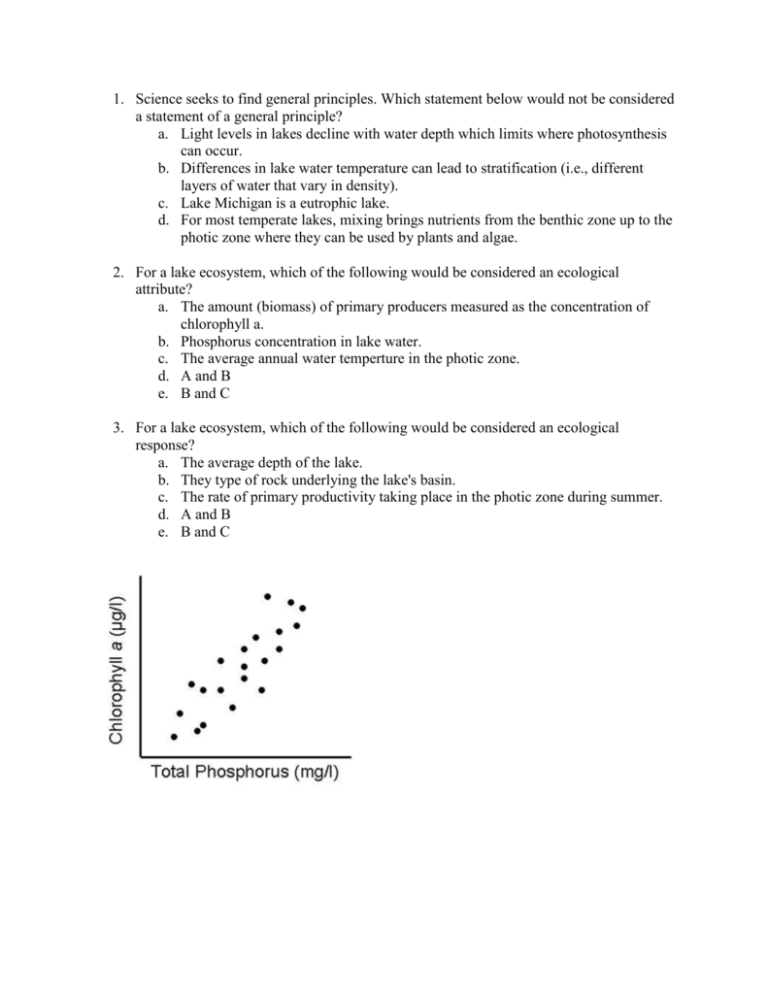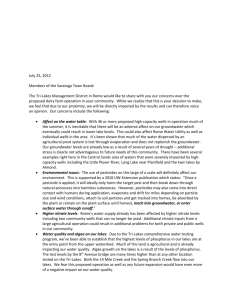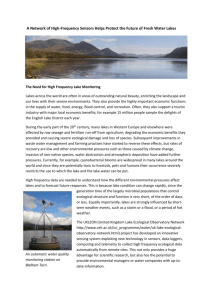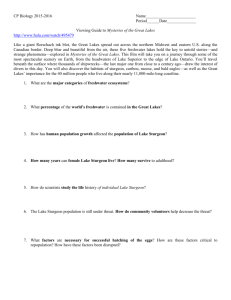Ecology Quiz - Cloudfront.net
advertisement

1. Science seeks to find general principles. Which statement below would not be considered a statement of a general principle? a. Light levels in lakes decline with water depth which limits where photosynthesis can occur. b. Differences in lake water temperature can lead to stratification (i.e., different layers of water that vary in density). c. Lake Michigan is a eutrophic lake. d. For most temperate lakes, mixing brings nutrients from the benthic zone up to the photic zone where they can be used by plants and algae. 2. For a lake ecosystem, which of the following would be considered an ecological attribute? a. The amount (biomass) of primary producers measured as the concentration of chlorophyll a. b. Phosphorus concentration in lake water. c. The average annual water temperture in the photic zone. d. A and B e. B and C 3. For a lake ecosystem, which of the following would be considered an ecological response? a. The average depth of the lake. b. They type of rock underlying the lake's basin. c. The rate of primary productivity taking place in the photic zone during summer. d. A and B e. B and C 4. The figure above shows chlorophyll a concentration (an index of algal biomass) plotted against phosphorus concentration from 21 North American freshwater lakes. What ecological rule would apply to freshwater lakes? a. Looking at the scatter, there is not an ecological rule that can be derived. b. Increasing phosphorus concentration in freshwater lakes produces greater amounts of algae. c. Increasing amounts of algae leads to greater phosphorus concentrations in freshwater lakes. d. Decreasing phosphorus concentration in freshwater lakes leads to greater amounts of algae. 5. The figure above shows chlorophyll a concentration (an index of algal biomass) plotted against phosphorus concentration from 21 North American saline (saltwater) lakes. Given what you've concluded about the relationship between phosphorus concentration and chlorophylla a concentration among freshwater lakes, does the same rule apply for saline (saltwater lakes)? a. Yes. Increasing phosphorus levels in saltwater lakes also stimulates algal growth. b. Yes. Increasing populations of algae in saline (saltwater) lakes leads to greater phosphorus concentrations in the water. c. No. The ecological rule I derived for freshwater lakes is opposite for what is observed among saline (saltwater) lakes. d. No. There is no relationship between chlorophylla a concentration and phosphorus concentration among saline (saltwater) lakes.








